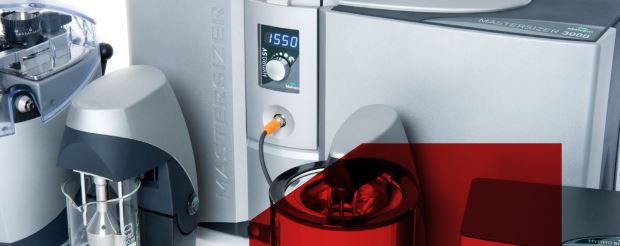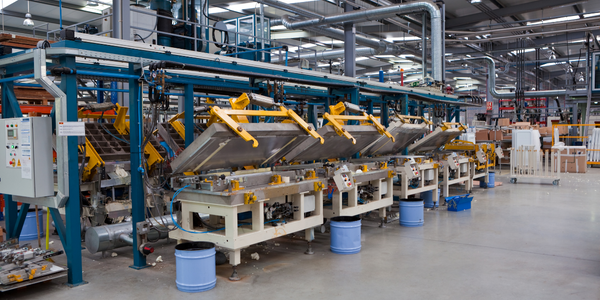Download PDF
Al Baghdadia TV's Transformation: Enhancing News Production with Avid Everywhere
Technology Category
- Application Infrastructure & Middleware - Database Management & Storage
- Infrastructure as a Service (IaaS) - Cloud Storage Services
Applicable Functions
- Quality Assurance
- Sales & Marketing
Use Cases
- Time Sensitive Networking
- Visual Quality Detection
Services
- System Integration
- Testing & Certification
The Challenge
Al Baghdadia TV, a Middle East broadcaster, was facing significant challenges in its news production process. The primary issue was the bottlenecks in sharing media between field journalists and the main studio, which was slowing down the time to air for breaking news. Additionally, storage and workflow restrictions were preventing the capacity for High Definition (HD) content. The broadcaster was also in the process of a phased station-wide migration to HD to maximize efficiency and quality of content. The second key issue was to significantly improve time to air for its news division. The broadcaster was also planning to expand with further Iraq-based studio facilities.
About The Customer
Al Baghdadia TV, headquartered in Cairo since 2005, serves the Middle East region. The network airs two channels: Al Baghdadia, a news-based 24-hour station, and B2, which broadcasts a mix of drama, movies, and entertainment. The network also operates studios in Baghdad and in northern Iraq, and plans to expand with further Iraq-based studio facilities. The broadcaster had two key issues in mind when it decided to overhaul its technical operations. The first was a phased station-wide migration to HD to maximize efficiency and quality of content, while the second was to significantly improve time to air for its news division.
The Solution
Al Baghdadia TV decided to overhaul its technical operations by introducing the Avid MediaCentral platform. This platform was chosen as the foundation to unify and streamline workflows across the breadth of its studio, local affiliate, and field operations. The full MediaCentral solution includes an upgraded iNEWS newsroom control system with iNEWS | Command and Media Composer | NewsCutter Option; ISIS | 5000 shared storage; 12 channels of AirSpeed 5000, Interplay | Capture and Interplay | Archive. All the MediaCentral components are designed for high definition news production, which is a key ingredient in Al Baghdadia's long-term plans to migrate all of its resources over from SD. Over the last 18 months, the broadcaster has undertaken a phased transition which has seen it exchange its SD ENG cameras for a fleet of HD units, and outfit its studios with HD-ready vision mixing and routing gear.
Operational Impact
Quantitative Benefit
Related Case Studies.

Case Study
Rapid and Simple Installation Provides Access to Critical Data
The customer needed to monitor non-contact alignment and non-contact process temperature in different positions along a 100-meter production line. Space around the line is tight and operators and forklift trucks are passing by constantly. Installation of correctly routed cables from sensors back to the control station would have been expensive and would have taken too long and caused too much disruption to ongoing operations.
Case Study
Real-Time IoT Tracking and Visualization Improve Manufacturing
Shimane Fujitsu, a wholly-owned subsidiary of Fujitsu and a leading manufacturer of business notebooks and tablets, set out to improve processes where factory inspections found product errors. Prioritizing product rework based on shipping date was challenging, and it caused Shimane Fujitsu to incur additional shipping fees. The company needed a way to collect data to better track the location of products in the rework cycle as well as monitor progress in real time. The collected data would also help process analysis for future improvements.

Case Study
Automatic Vision Inspection Solution for Product Traceability
With greater market demand for food safety, traceability is receiving increasingly more attention in the food and beverage industry as well as the packaging industry. One of the world's leading providers of beverage containers required a system to identify bar codes and alphanumeric characters on ink-jet-printed labels at a run rate of 7 units and minimum 99.9% accuracy. Since there were few engineers in the factory, the customer sought to implement a reliable system with an easy-to-use GUI for workers with a less technical background.

Case Study
Centralizing Data for Improved Efficiency: A Case Study on Malvern Panalytical
Malvern Panalytical, a UK-based hi-tech electronics company, was grappling with the challenge of decentralized data storage. The company had a vast amount of unstructured data scattered across various platforms, from hard drives to emails and floppy disks. This made the data searching process extremely cumbersome and inefficient. The company's rapid growth, from 200 to over 1,000 employees in a decade, and expansion across three continents further exacerbated the need for a more structured and centralized data system. As a company involved in electronics manufacturing and software development, it was crucial for Malvern Panalytical to find a platform that could structure all their data, track all modifications of documents in real time, and provide clear visibility of the internal information flow across all its facilities.

Case Study
Automated Inspection of Axial Piston Motors
Earth moving machines require an immense energy source to provide the power they need for use within civil engineering works. ‘Hydraulic Motors’ allow this power to be applied to enable the machines movement and in addition ‘Control Valves’ also provide the operator with the precise feel and control required to undertake the necessary tasks needed for such machines, including trenching, rock breaking and demolition. These same motors are also used in cranes, wheel loaders and general construction equipment. Though not a new product, the designs of such motors and control valves have been around a few decades, the overall method for manufacture has changed rapidly over the last few years to take account of the need for more modular designs, manufacture and just-in-time manufacturing. Kawasaki Precision Machinery (UK) Ltd based in Plymouth, UK is one of the leading manufacturers of such motors and pumps. They approached Industrial Vision Systems Ltd to come up with a solution to provide automated inspection of such pumps for their semi-automated assembly process. The pumps requiring inspection are at a sub-assembly stage when they are due for the inspection process to take place. Due to the highly modular nature of the construction each part of the pump can have many different derivatives which overall have a different effect on the pump in industrial use. It is therefore critical for the manufacturing process to check all components are the correct type and number for the construction of the pump to begin. Once built it is difficult and costly to rework such units if a fault is detected later in the manufacturing process, therefore automated visual inspection is critical for the success in building quality motors and pumps.






